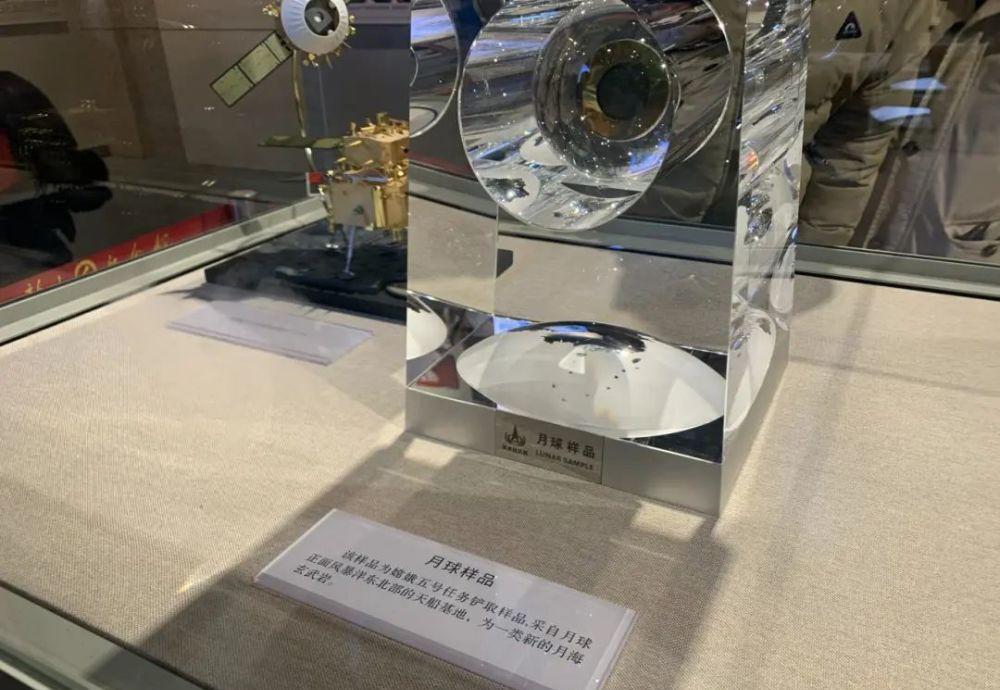On December 17, 2020, China's Chang'e-5 returner successfully landed in Siziwangqi, Inner Mongolia, bringing back 1731 grams of lunar soil, the main component of which is silica, accounting for 75% of the total, in addition to sodium oxide, calcium oxide, iron olivine, dark color, and a variety of styles.

Compared with China's lunar soil, the 328 kg of lunar soil brought back by the United States from the moon is grayish white, and its main components are silica, titanium dioxide, manganese oxide, magnesium oxide, sodium oxide, potassium oxide, and there is a certain difference between the two.
China deals with lunar soil in accordance with the principle of "two parts, three uses". The two parts refer to the fact that most of the lunar soil is stored at the National Astronomical Observatory of the Chinese Academy of Sciences in Beijing, and a small part is stored in Shaoshan, Hunan. The three purposes are placed in museums for people to visit and understand; used for research in China's universities and local scientific research institutions; and according to the international conventions and cooperation agreements signed by China, part of the lunar soil is lent to scientists in other countries for research, but need to be applied for in advance.
China's research on lunar soil is advancing rapidly. On January 8, Science Progress published a lunar soil research article written by the Institute of Geology and Geophysics of the Chinese Academy of Sciences and other units, pointing out that the water content in the lunar soil of the Chang'e-5 sampling area is about 120 ppm, which means that the region contains 120 grams of water per 1 ton of lunar soil.
The amount of water in rocks sputtered into the sampling area from elsewhere is 180 ppm, or about 180 grams of water per ton of rock. This is the first time that China has obtained lunar water content under in situ conditions on the lunar surface, which is of great significance.
It should be pointed out that the instrument that detects lunar soil data is the "lunar mineral spectrometer", and the water in the lunar soil is not water that can flow and drink, but the water molecules or hydroxyl groups in the minerals, which need to undergo a series of transformations before they can be drunk.
In fact, China's lunar soil as a whole is "dry", because the Landing Site of Chang'e-5 is near Mount Lümke, which is actually a 1300-meter-high volcanic group located in the northern part of the Storm Ocean. Affected by a fierce volcanic eruption about 1.3 billion years ago, the lunar soil, as if it had undergone degassing, could not contain much water. The 60 grams of water that are more rocky than the lunar soil may come from the interior of the moon, and once confirmed, it is undoubtedly a major discovery.
There are no green plants on the moon and photosynthesis cannot be carried out, so where does the water in the lunar soil come from?
Researchers believe that most of these water molecules and hydroxyl groups are masterpieces of the solar wind. The solar wind is a stream of charged particles of supersonic plasmas emitted from the sun's upper atmosphere, composed of micromaterials such as protons and electrons.
The particle flow has a strong dynamic during the operation, rushing to the space at a speed of 200 to 900 km /s, and some particle flows eventually "fall" into different planets. On March 7, 2012, Earth suffered one of its strongest solar storms in 10 years, and wireless communications on land were significantly affected.
As early as 1952, american chemist Harold Yuri conducted an in-depth analysis of solar storms, pointing out that there may be water or volatile substances similar to water in lunar depressions that the sun cannot illuminate.
It is precisely because of the influence of the solar wind and lunar volcanoes that the distribution of water on the moon is extremely uneven: some places are "wet", containing a lot of water, which is easy to detect; some places are "dry", and no matter how much lunar soil is taken, water cannot be detected.
From the first Apollo 11 landing on the moon in 1969 to the return of Apollo 17 in December 1972, the 328 kg of lunar soil brought back from the moon by the United States after six successful moon landings, and no moisture was detected by exhaustion, so scientists at that time thought that Harold's guess was wrong, and there would be no water on the moon.
The turning point occurred in 1978, when the Soviet Union launched the last probe in the lunar program, Luna 24, which, unlike previous probes, collected lunar soil 2 meters below the lunar surface, totaling 170 grams. It was this batch of lunar soils that Soviet scientists detected trace amounts of moisture from the lunar soils.
This result is controversial, on the one hand, because the water content is too small, there may be detection errors; on the other hand, some experts suspect that after the lunar soil returns to the earth, it is not well preserved enough to infiltration of wet air, "polluting" the lunar soil.
Clues to the moon's water after 2009 have appeared in large numbers. First, the "Chandrayaan-1" probe launched by India found water with its lunar mineral mapping spectrometer; then the probe "Cassini", "Deep Impact", lunar observation and sensing satellites and other spectrometers all detected water, and water on the moon received a solid hammer.
Original: Blog post